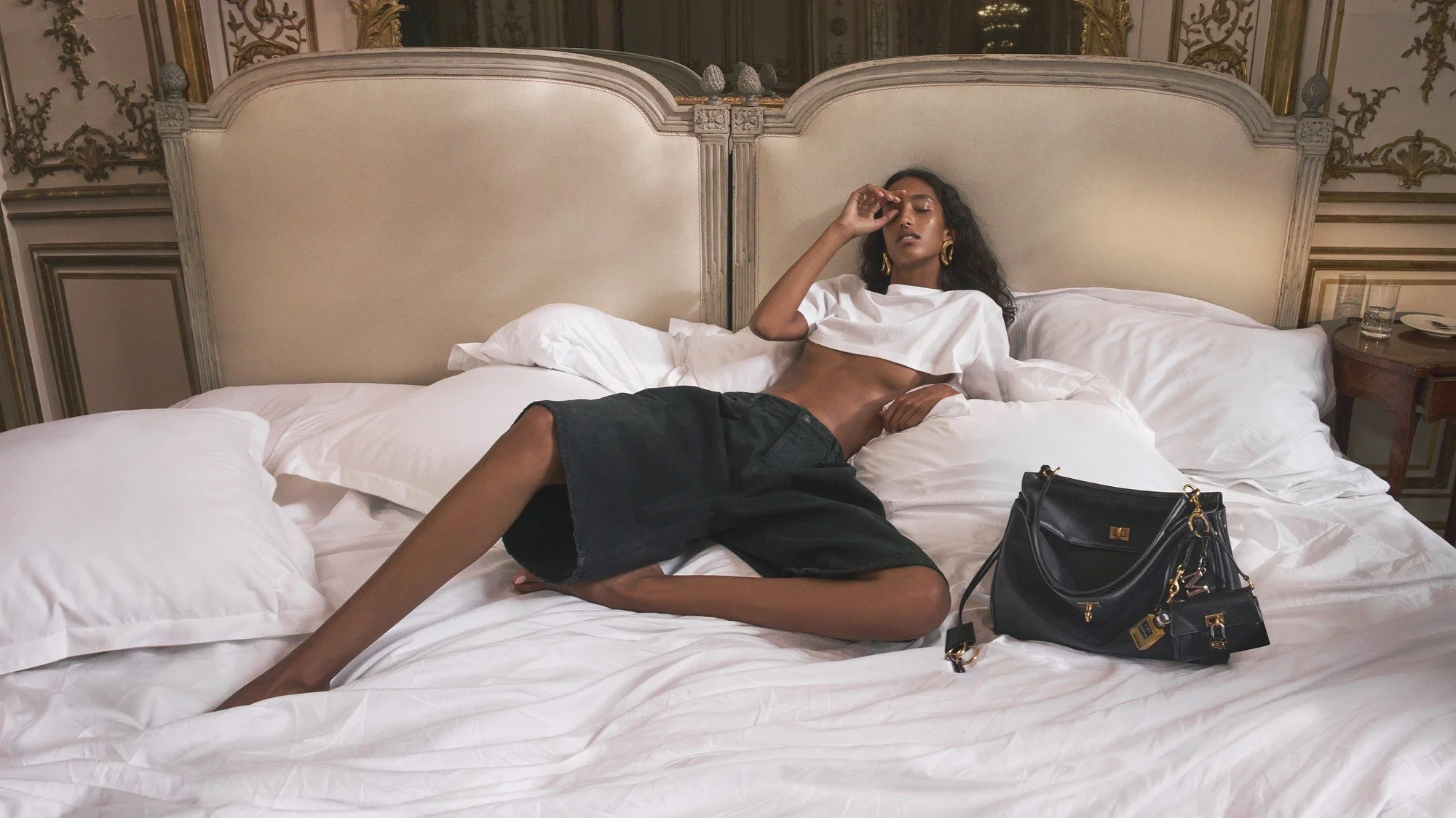Balenciaga by Pierpaolo Piccioli: The Quiet Revolution
Photo by David Sims/Courtesy of Balenciaga
When Pierpaolo Piccioli revealed his first campaign for Balenciaga, it did not arrive like a thunderclap. It came quietly, like the first light after a storm. After years of provocation and distortion under Demna, this new chapter feels like a soft reset. The campaign, photographed by David Sims, speaks in whispers rather than slogans. It is intimate, reflective, tender.
Piccioli’s Balenciaga is not erasing what came before. It is reshaping it with grace. The images show models Mona Tougaard and Sandra Murray lying in sunlit bedrooms at the Hôtel de Maisons–Pozzo di Borgo in Paris. The spaces feel lived in, not staged. There is beauty in the way fabric folds, in how a hand rests on a pillow, in the quiet breath between poses. It is power in stillness.
Courtesy of Balenciaga
Courtesy of Balenciaga
Piccioli has said he wants to bring “delicate humanity” into Balenciaga. It shows. The campaign’s mood is not one of perfection but of intimacy. The models appear as themselves, not as characters. There is no distance, no armor. The tone is gentle but assured, confident without spectacle.
The Rodeo and Le City bags sit at the heart of this new vision. They are not simply accessories but emotional anchors. The Rodeo carries the ease of movement and individuality. The City remains a classic emblem of Balenciaga’s urban strength. In Piccioli’s world, they are symbols of continuity, the link between heritage and now.
What emerges from this campaign is a portrait of a new kind of Balenciaga woman. She is composed but not cold. She moves quietly yet leaves an imprint. She wears beauty like a language she invented herself. If Demna’s Balenciaga was about confrontation, Piccioli’s is about reflection. It is a subtle kind of power, one that trusts silence to do the talking.
Courtesy of Balenciaga
Courtesy of Balenciaga
This shift arrives at a significant moment for the house. After controversy and public fatigue, Balenciaga has been in need of recalibration. Appointing Piccioli was not just a creative decision but a cultural one. Known for his romanticism and depth at Valentino, he now brings emotion to a brand once defined by sharpness and shock. His approach is less about rebranding and more about rehumanizing.
He does not pretend the past never happened. He acknowledges it, then moves forward. His Balenciaga looks back only to understand what it must carry ahead.
And maybe that is what makes this campaign so powerful. It is not trying to be iconic. It is simply trying to be honest. In a world obsessed with loudness, Piccioli offers a kind of silence that still resonates.
Courtesy of Balenciaga
Balenciaga under Pierpaolo Piccioli is not a return to minimalism. It is a return to meaning. It asks us to look again, slower this time, and find beauty where we may have stopped noticing it.
It is fashion as breath. Fashion as memory. Fashion as quiet revolution.






